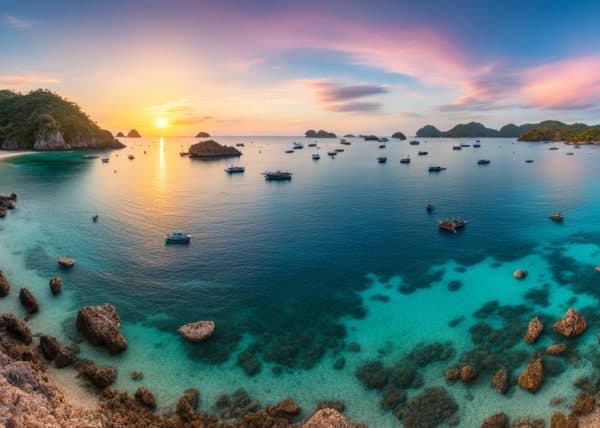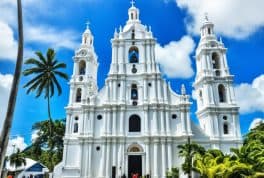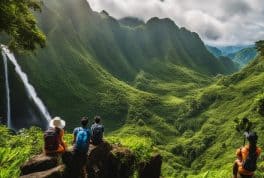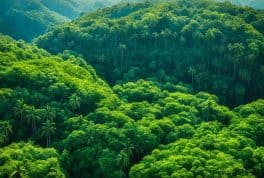Negros Occidental
Negros Occidental, known as the "Sugarbowl of the Philippines," is a vibrant province in the Western Visayas. Famous for its expansive sugarcane fields, rich history, and the lively MassKara Festival in Bacolod City, the province offers a blend of historical charm and natural beauty. Highlights include the majestic ruins in Talisay City, the serene Mambukal Mountain Resort, and the pristine beaches of Sipalay, making it a captivating destination for visitors.
Top 10 Things to See in Negros Occidental
- The Ruins in Talisay City: Often referred to as the "Taj Mahal of Negros," this historical mansion is renowned for its fascinating history and architectural beauty. It's especially stunning at sunset when the remaining structure is bathed in golden light.
- Mambukal Mountain Resort: Located in Murcia, this resort is famous for its hot sulfur springs, seven waterfalls, and a lush rainforest. It's a perfect spot for nature lovers and those seeking relaxation.
- Lakawon Island: A pristine white sand beach resort on a small island off the coast of Cadiz City. Lakawon is known for its clear waters, white sands, and the famous TawHai Floating Bar, the largest in Asia.
- Sipalay Beaches: Sipalay is famous for its stunning beaches and is often referred to as the "Maldives of the Philippines." It's a great place for diving and snorkeling, with numerous resorts along its coastline.
- Silay City Heritage Houses: Known as the "Paris of Negros," Silay City is home to numerous well-preserved ancestral homes and museums that showcase the rich history and culture of the province.
- Campuestohan Highland Resort: Situated on the borders of Talisay City and Bacolod City, this mountain resort is known for its picturesque landscapes, cool climate, and a wide array of recreational facilities, including a wave pool and rope courses.
- San Sebastian Cathedral in Bacolod City: A historical landmark in the heart of Bacolod City, this church is an architectural marvel with a rich history and is a symbol of the Catholic faith in the region.
- Danjugan Island Marine Reserve: Located near Cauayan, this marine sanctuary is a haven for biodiversity and offers unique experiences like bird watching, snorkeling, and kayaking in its pristine natural environment.
- Capitol Park and Lagoon in Bacolod City: A landmark in Bacolod, the park is known for its iconic lagoon with a majestic fountain and the golden statue of a woman standing on a water buffalo. It’s a popular spot for relaxation and exercise.
- Balay Negrense Museum in Silay City: This heritage museum was once a 19th-century ancestral home and now serves as a showcase of the lifestyle of a sugar baron during the Spanish colonial period.
Guides and Tours
Cities on Negros Occidental
- Bacolod City (the capital city of Negros Occidental)
- Bago City
- Cadiz City
- Escalante City
- Himamaylan City
- Kabankalan City
- La Carlota City
- Sagay City
- San Carlos City
- Silay City
- Sipalay City
- Talisay City
- Victorias City
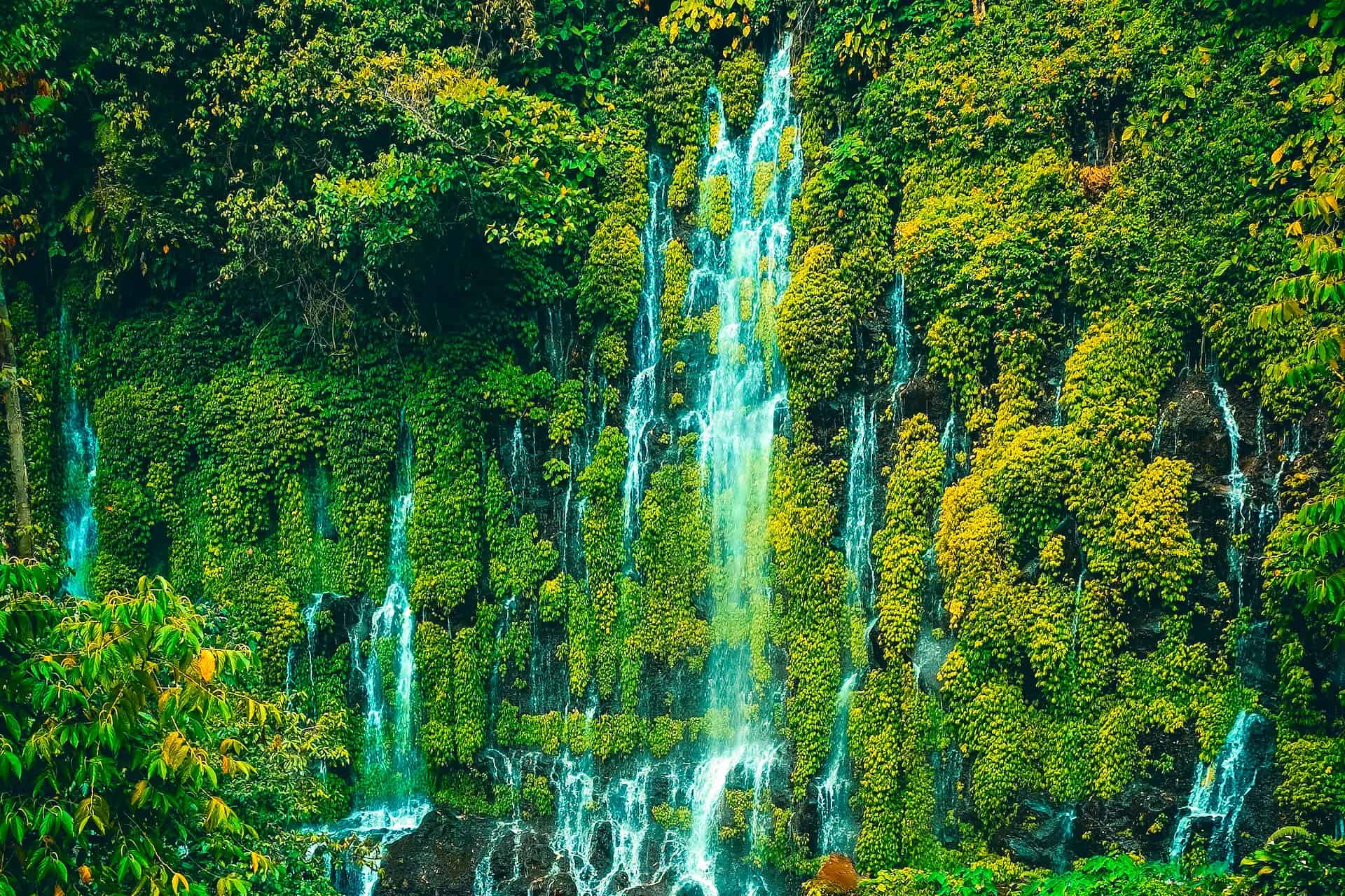
Top 10 Questions and Answers about Negros Occidental
- What is Negros Occidental known for?
- Negros Occidental is known as the "Sugarbowl of the Philippines" due to its vast sugarcane plantations. It's also famous for its heritage sites, beautiful beaches, mountain resorts, and vibrant festivals like the MassKara Festival.
- Where is Negros Occidental located?
- Negros Occidental is located in the Western Visayas region of the Philippines. It occupies the northwestern half of Negros Island and is bordered by Negros Oriental to the southeast.
- What is the capital of Negros Occidental?
- The capital of Negros Occidental is Bacolod City, often referred to as the "City of Smiles" due to its MassKara Festival and the warm, welcoming nature of its residents.
- What are the top tourist attractions in Negros Occidental?
- Top attractions include The Ruins in Talisay City, Mambukal Mountain Resort, Lakawon Island, Sipalay Beaches, Silay City Heritage Houses, Campuestohan Highland Resort, San Sebastian Cathedral, Danjugan Island Marine Reserve, Capitol Park and Lagoon, and the Balay Negrense Museum.
- What is the best time to visit Negros Occidental?
- The best time to visit is during the dry season from December to May, with cooler temperatures and less rainfall. Festivals like the MassKara Festival in October also draw many visitors.
- What are some traditional dishes to try in Negros Occidental?
- Traditional dishes include Chicken Inasal (char-grilled chicken), Kansi (sour soup with beef shanks), and sweet treats like Piaya (flatbread with muscovado filling) and Napoleones (pastry with a sweet filling and glaze).
- How can one travel to Negros Occidental?
- Visitors can fly into Bacolod-Silay Airport, which serves both domestic and limited international flights. Sea travel is also an option, with ferries connecting to various ports in the Philippines.
- Is Negros Occidental safe for tourists?
- Yes, Negros Occidental is generally safe for tourists. As with any travel destination, it's advisable to take standard safety precautions, like safeguarding valuables and being aware of your surroundings.
- Can you recommend eco-tourism sites in Negros Occidental?
- Danjugan Island Marine Reserve is a prime eco-tourism site, offering a chance to experience rich marine biodiversity. Mambukal Mountain Resort is another, known for its hot springs and natural landscapes.
- What languages are spoken in Negros Occidental?
- The primary language is Hiligaynon (Ilonggo). Filipino and English are also widely spoken, especially in urban areas and tourist destinations.

Why should you visit Negros Occidental
Discovering the Enchantment of Negros Occidental: A Traveler’s Haven
Introduction to the Splendor of Negros Occidental Negros Occidental, a province in the Philippines, known as the "Sugarbowl of the Philippines," stands out as a beacon of cultural richness, natural beauty, and vibrant history. This enchanting destination offers a compelling mix of scenic landscapes, historical landmarks, culinary delights, and warm hospitality, making it a must-visit for travelers seeking a diverse and enriching experience.
The Warm Embrace of Bacolod City Bacolod, the capital city of Negros Occidental, known as the "City of Smiles," warmly welcomes visitors with its unique blend of urban vibrancy and laid-back charm. The city is famous for its MassKara Festival, a spectacle of color, music, and dance reflecting the city's lively spirit. The festival, showcasing elaborate masks and costumes, transforms the city into a vibrant canvas of joy and celebration, embodying the resilient spirit of its people.
Historical Journey Through Time Negros Occidental's rich history is encapsulated in its well-preserved ancestral homes and landmarks. The Ruins in Talisay City, often referred to as the "Taj Mahal of Negros," offers a poignant glimpse into the province's past. This architectural marvel, set against the backdrop of sugar plantations, is a testament to a bygone era's opulence and romance. In Silay City, known as the "Paris of Negros," travelers can explore the intricate architecture and storied past of its heritage houses, transporting them back to the colonial period.
A Natural Paradise Unveiled The province's natural wonders are a true highlight, with landscapes ranging from serene beaches to lush highlands. Sipalay, with its stunning coastline and clear waters, is a haven for beach lovers and divers. Mambukal Mountain Resort, nestled in the foothills of Mount Kanlaon, offers a refreshing retreat with its hot sulfur springs, cascading waterfalls, and rich biodiversity. For eco-tourism enthusiasts, Danjugan Island Marine Reserve presents an untouched natural sanctuary, ideal for snorkeling, bird watching, and appreciating the province's ecological diversity.
Culinary Expedition in Negros Occidental No visit to Negros Occidental is complete without indulging in its culinary offerings. The province is renowned for its Chicken Inasal, a mouth-watering grilled chicken dish that has become a staple in Filipino cuisine. Local delicacies like Piaya and Napoleones offer a taste of the sweet heritage of Negros Occidental, rooted in its sugarcane legacy. The province's diverse culinary scene, from street food to fine dining, provides a gastronomic journey that is as rich and varied as its culture.
Cultural Immersion and Festive Celebrations Negros Occidental's cultural tapestry is woven through its numerous festivals and traditions. Beyond the MassKara Festival, the Panaad sa Negros Festival showcases the arts, crafts, and cultural heritage of the province's cities and municipalities. These events offer an immersive experience into the local culture, providing an opportunity for visitors to engage with the community, understand their traditions, and participate in their celebrations.
The Warmth and Hospitality of the Locals The people of Negros Occidental are known for their warmth and hospitality. Visitors are often greeted with smiles and a friendly demeanor, making them feel at home. This sense of welcoming and kindness adds a personal touch to the travel experience, creating lasting memories and connections.
An Adventure Seeker’s Playground For adventure enthusiasts, Negros Occidental offers a variety of activities. The province's terrain provides ideal conditions for trekking, mountain biking, and zip-lining. The waters surrounding the province are perfect for water sports like kayaking, diving, and sailing, making it an adventure playground for those seeking thrills amidst nature.
Relaxation and Wellness Retreats For those seeking relaxation, Negros Occidental offers numerous wellness retreats. Resorts like the Campuestohan Highland Resort provide a tranquil environment for rejuvenation, with spa services, meditation areas, and stunning views of the natural landscape. These retreats offer a perfect escape from the hustle and bustle of daily life, allowing visitors to unwind and recharge.
Conclusion: A Destination for All Negros Occidental, with its rich history, stunning natural beauty, vibrant culture, and warm hospitality, offers a comprehensive travel experience. Whether you're a history enthusiast, a nature lover, a foodie, or an adventure seeker, this province provides a multitude of experiences to cater to all interests. The charm of Negros Occidental lies in its ability to blend these diverse elements into a cohesive and enchanting travel destination. It invites travelers from around the world to discover its wonders, immerse in its culture, and create unforgettable memories. Negros Occidental is not just a place to visit; it's a world to experience, cherish, and remember long after the journey ends.
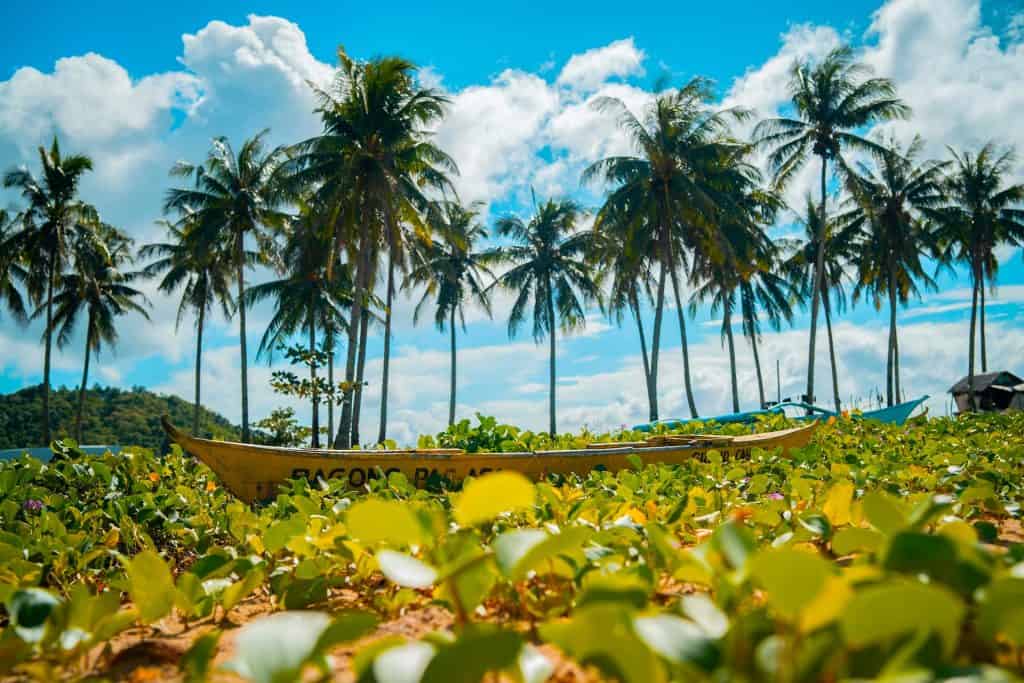
Negros Occidental Facts
1: Introduction to Negros Occidental
Negros island Occidental, often simply referred to as the negros island Occidental map, is a province that brims with a rich history, vibrant culture, and breathtaking landscapes. Located in the western part of the Visayas island group in the Philippines, it occupies the northwestern half of the larger Negros Island. The province is a treasure trove of experiences, offering everything from serene beaches to historic landmarks. This section delves into the essence of the Negros island Occidental, exploring its geography, history, and the unique charm that makes it an unforgettable destination.
At the very heart of Negros Occidental province lies its capital city, Bacolod, known for its friendly locals and sweet delicacies. Bacolod City, often referred to as the City of Smiles, is more than just the administrative center; it’s the pulsating heart of the province, embodying the warmth and hospitality the region is known for. The capital city is a microcosm of what Negros Occidental offers: a blend of historical richness, culinary delights, and the warmth of its people.
The map of Negros Occidental reveals a diverse topography map, ranging from coastal plains map to rugged mountain ranges map. The province map's western border map is fringed by the serene waters of the Sulu Sea, while its eastern part map is marked by the mountainous terrain map that it shares with its neighbor, Negros Oriental. This diverse geography map not only shapes the province map's climate and agriculture map, but the map also contributes to its varied tourist spots map, each offering a unique experience map to visitors.
Negros Occidental's history is as colorful as its landscapes. It has played a pivotal role in the Philippines' history, especially during the late 19th and early 20th centuries. The province was at the forefront of the sugar industry, which brought both wealth and challenges. The remnants of this sugar-dominated era are still evident in the grand mansions and haciendas scattered throughout the province, some of which have been converted into museums and other tourist spots and attractions.
A journey through the Negros Occidental province is incomplete without exploring its rich cultural tapestry. The province is home to various festivals, with the Panaad sa Negros Festival being the most prominent. This annual event, held in Bacolod City, is a celebration of the province's history, culture, and achievements. It's a vibrant spectacle that showcases the diverse heritage of the different cities and municipalities of the Negros Occidental province.
The natural beauty of Negros Occidental is unparalleled. From the pristine beaches along its coastlines to the lush highlands, the province is a haven for nature lovers. The Mambukal Mountain Resort in Murcia, for instance, is a popular destination for those seeking a retreat in the cooler climes of the mountains. Similarly, the Campuestohan Highland Resort offers breathtaking views and a host of recreational activities.
For those keen on exploring the province's rich biodiversity, Negros Occidental doesn't disappoint. The province is a sanctuary for various endemic and endangered species. The Negros Forests and Ecological Foundation Inc. (NFEFI) in Bacolod City is dedicated to the conservation of the province's wildlife, offering a glimpse into the efforts being made to preserve Negros Occidental's natural heritage.
Agriculture plays a significant role in the life of Negros Occidental. The province is often referred to as the "Sugarbowl of the Philippines," owing to its vast sugar cane plantations. This agricultural heritage has shaped the landscape and economy of Negros Occidental, with the sugar industry being a major driver of growth.
The people of Negros Occidental, known for their warmth and hospitality, are the province's greatest asset. The blend of indigenous, Spanish, and American influences has created a unique cultural identity that is evident in their language, customs, and way of life. This cultural melting pot is best experienced through the province's cuisine, which ranges from the famous Chicken Inasal to the sweet delicacies like Piaya and Napoleones.
As we delve deeper into the essence of Negros Occidental, it becomes clear that this province is more than just a spot on the map. It's a place where history, culture, nature, and human warmth intertwine to create a destination that captivates the heart of every visitor. Whether it's the historical landmarks in Silay City, the bustling streets of Bacolod City, or the serene beauty of its beaches and mountains, Negros Occidental offers a myriad of experiences waiting to be discovered.
In conclusion, Negros Occidental is not just a province; it's a narrative of resilience, beauty, and cultural richness. Its diverse landscapes, rich history, and warm people make it a destination that offers something for everyone. From exploring historical landmarks to relaxing in natural hot springs, from participating in colorful festivals to savoring local culinary delights, Negros Occidental is a province that promises an unforgettable journey into the heart of the Filipino spirit.
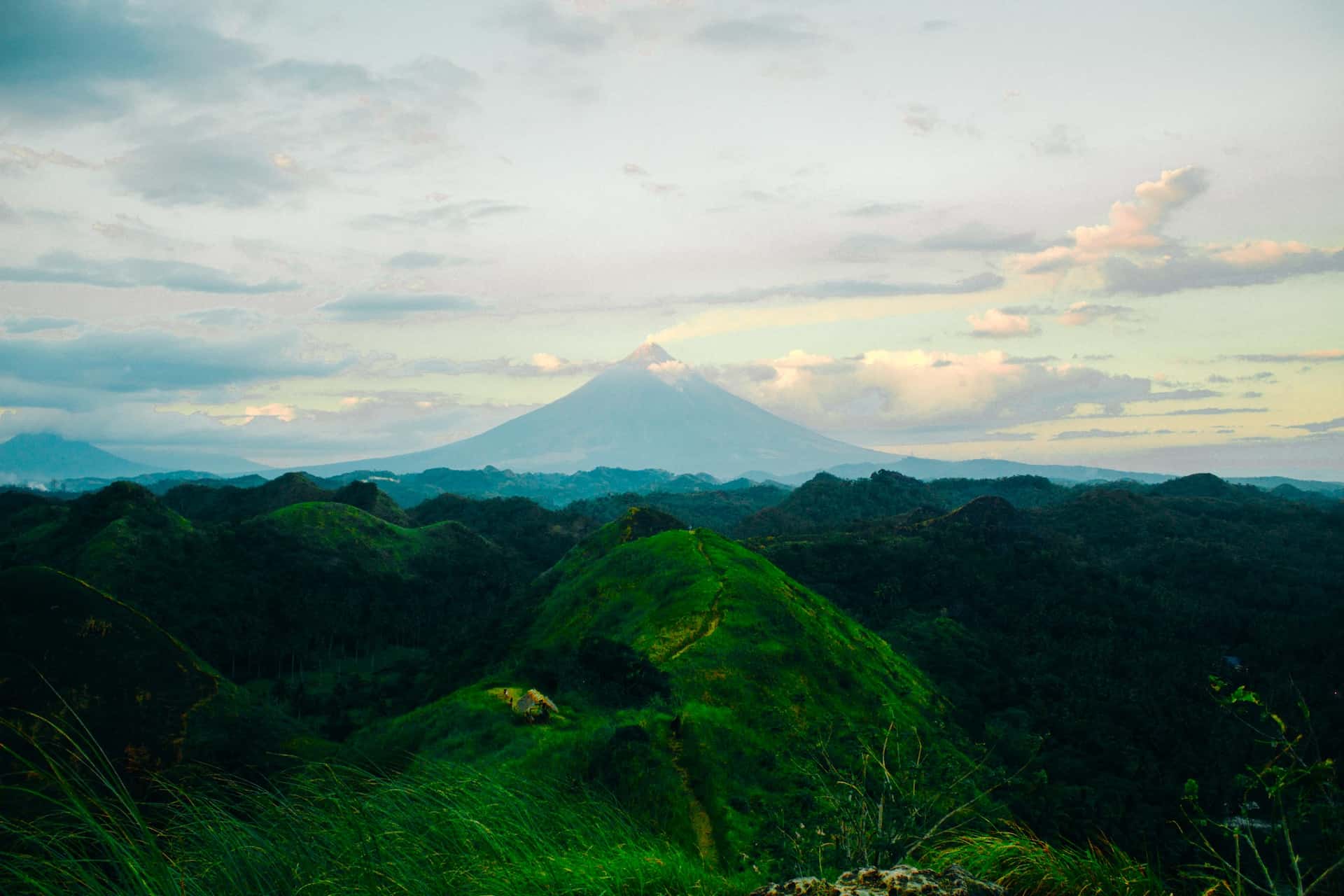
2: The Charm of Negros Occidental's Cities and Municipalities
Negros Occidental, a province rich in history and culture, is home to several cities and municipalities, each with its own unique charm and character. From the bustling streets of Bacolod City, the provincial capital city, to the historical significance of Talisay City, Silay City, and beyond, this section explores the diverse urban landscapes that make up the vibrant tapestry of Negros Occidental.
Bacolod City: The Heartbeat of Negros Occidental
Bacolod City, often hailed as the 'City of Smiles,' is more than just the capital city of Negros Occidental; it is the cultural, economic, and political hub of the province. The city's vibrancy is palpable in its streets, where history and modernity coexist harmoniously. Bacolod is not only the administrative center of Negros Occidental but also a melting pot of the province's rich cultural heritage. It's a city where festivals, such as the famous MassKara Festival, paint the town in vivid colors and infectious energy.
Bacolod City's culinary scene is a testament to the province's diverse gastronomy. From the savory Chicken Inasal, a local grilled chicken delicacy, to the sweet treats like Piaya, Bacolod offers a culinary journey that is as diverse as its landscape. The city's restaurants and cafés not only serve delicious food but also narrate the story of Negros Occidental's agricultural roots, particularly its sugar industry.
Silay City: The Paris of Negros Occidental
Silay City, often referred to as the 'Paris of Negros,' is a short drive from Bacolod City. This city is a living museum, boasting well-preserved ancestral homes and buildings that echo the opulence of its past. As one wanders through the streets of Silay City, the influence of Spanish colonial architecture is unmistakable. The city played a pivotal role in the province's history, particularly during the Philippine Revolution and the subsequent Philippine-American War. Today, Silay is not just a reminder of Negros Occidental's past but a testament to its commitment to preserving its rich heritage.
Talisay City: A Blend of History and Modernity
Talisay City, another gem in the crown of Negros Occidental, offers a unique blend of historical and modern attractions. The capital city is home to The Ruins, an iconic mansion that stands as a symbol of love and resilience. This architectural marvel, often described as the 'Taj Mahal of Negros Occidental,' attracts visitors from all over the world. Apart from its historical landmarks, Talisay City is also known for its progress in commerce and industry, contributing significantly to the economy of Negros Occidental.
Sagay City: The Northern Gateway
Sagay City, located at the northern tip of Negros Occidental, is often hailed as the 'Northern Gateway' to the province. It's a city that thrives on its rich marine resources and is known for its efforts in marine conservation. The Carbin Reef, a part of the Sagay Marine Reserve, is a testament to the capital city here's commitment to preserving its natural environment. This marine sanctuary is not only a haven for a variety of marine species but also a popular spot for snorkeling and diving enthusiasts.
Cadiz City: The Rising Star of the North
Cadiz City, another notable city in Negros Occidental, is often overshadowed by its more famous neighbors. However, this city is slowly making a name for itself, particularly in the field of renewable energy. With vast tracts of land dedicated to solar farms, Cadiz City is contributing to the green revolution of Negros Occidental. The city's beaches, such as Lakawon Island, are hidden gems, offering pristine sands and crystal-clear waters.
Kabankalan and Bago Cities: The Southern Sentinels
*Kabankalan city and the Bago city. Cities, located in the southern part of Negros Occidental, are often regarded as the province's agricultural heartlands. These cities play a crucial role in the province's economy, with vast areas dedicated to sugarcane, rice, and other crops. Kabankalan and bago City each, in particular, is known for its vibrant cultural festivals that showcase the rich heritage of Negros Occidental.
A Tapestry of Experiences
Each city and municipality in Negros Occidental offers a distinct experience, yet they all contribute to the province's rich tapestry. From the bustling streets of Bacolod City to the serene beaches of Cadiz City, from the historical landmarks of Silay and Talisay Cities to the natural wonders of Sagay City, Negros Occidental is a province that celebrates diversity in every aspect.
As one travels through these cities, the essence of Negros Occidental becomes increasingly apparent. It's a province where the past is cherished, the present is celebrated, and the future is embraced with open arms. The cities and municipalities of Negros Occidental, each with their unique character and charm, collectively tell the story of a province that is rich in history, culture, and natural beauty.
In conclusion, the urban landscapes of Negros Occidental are as diverse as they are captivating. Each city and municipality contributes its unique flavor to the province's identity, making the map of Negros Occidental a destination that promises a myriad of experiences. Whether it's exploring historical landmarks, indulging in local culinary delights, or simply soaking in the natural beauty, the cities of Negros Occidental offer something for every traveler. As the journey through these cities unfolds, one can't help but be enamored by the charm and vibrancy of Negros Occidental – a province that truly is the heart of the Western Visayas.

3: Natural Wonders and Tourist Attractions of Negros Occidental
Negros Occidental, a province in the Philippines known for its captivating landscapes and rich cultural heritage, is a treasure trove of natural wonders and various tourist spots and attractions. From the serene beaches of its coastline to the lush highlands, the province offers a diverse range of experiences that cater to the taste of every traveler. This section will explore the various natural attractions and tourist spots that make Negros Occidental a must-visit destination.
The Beaches of Negros Occidental: Pristine and Tranquil
The beaches in Negros Occidental are among the country and its most alluring tourist spots and attractions. These stretches of sand and sea offer a peaceful escape from the hustle and bustle of city life. Sugar Beach, with its fine, powdery sand and crystal clear waters, is a paradise for those seeking a tranquil beach experience. Another beach gem is the remote Danjugan Island, an eco-tourism haven known for its rich marine life and untouched natural beauty. The island's commitment to environmental conservation makes it a unique destination for eco-conscious travelers.
Lakawon Island, with its famed white sand beaches and vibrant marine life, is another popular beach destination in Negros Occidental. Its crystal-clear waters are ideal for swimming, snorkeling, and other water activities, making it a perfect spot for families and adventure seekers alike. Carbin Reef, part of the Sagay Marine Reserve, is a sandbar that emerges from the sea, offering a surreal experience amidst the vastness of the ocean.
The Highlands of Negros Occidental: A Breath of Fresh Air
Negros Occidental is not just about beaches; the province also boasts of stunning highlands that offer a completely different but equally mesmerizing experience. Mambukal Mountain Resort, located in the foothills of Mount Kanlaon, is a popular destination for those looking to immerse themselves in nature. With its hot sulfur springs, cascading waterfalls, and lush vegetation, Mambukal provides a rejuvenating retreat for nature enthusiasts.
Campuestohan Highland Resort is another attraction that has gained popularity among tourists. This mountain resort is a blend of adventure and relaxation, offering various activities such as zip-lining, horseback riding, and a wave pool. The resort's unique accommodations, including hobbit-inspired houses, add to its charm, making it an ideal getaway for families and groups.
Negros Occidental's Rich Biodiversity: A Haven for Wildlife Enthusiasts
Negros Occidental's natural beauty extends beyond its landscapes to include a rich biodiversity. The province is a sanctuary for various endemic and endangered species, making it a haven for wildlife enthusiasts and researchers. The Negros Forests and Ecological Foundation Inc. (NFEFI) in Bacolod City plays a significant role in the conservation efforts for the province's wildlife. Visitors can learn about these efforts and witness a variety of species, including birds, mammals, and reptiles, in their natural habitat.
Nature Reserves and Eco-Tourism Spots
Negros Occidental's commitment to preserving its natural environment is evident in its numerous nature reserves and eco-tourism spots. The province's efforts in promoting eco-tourism not only provide visitors with unique experiences but also contribute to the conservation of its natural resources. Danjugan Island, for instance, is not just a beach destination but also an important marine reserve that offers educational tours focusing on marine conservation.
Negros Occidental's Underwater World: A Diver's Paradise
The province's rich marine life makes it a popular destination for snorkeling and diving enthusiasts. The clear waters of Negros Occidental provide an ideal environment for exploring the vibrant underwater world. The coral reefs surrounding the province are teeming with a diverse range of marine species, offering an unforgettable experience for those who venture beneath the surface.
Conclusion: A Destination for Every Type of Traveler
Negros Occidental is a province that has something for everyone. Its natural wonders, from serene beaches to breathtaking highlands, make it a destination that caters to a wide range of interests. Whether it's relaxing on a beach, exploring the lush mountains, delving into the underwater world, or learning about wildlife conservation, Negros Occidental offers a plethora of experiences that leave lasting impressions on its visitors.
The natural beauty of Negros Occidental, combined with its rich cultural heritage and warm hospitality, makes it a destination that should be on every traveler's list. As one explores the diverse landscapes and unique attractions of the province, it becomes clear why Negros Occidental is considered one of the jewels of the Philippines. It's a place where nature's bounty is celebrated, preserved, and shared with those who come to experience its wonders.
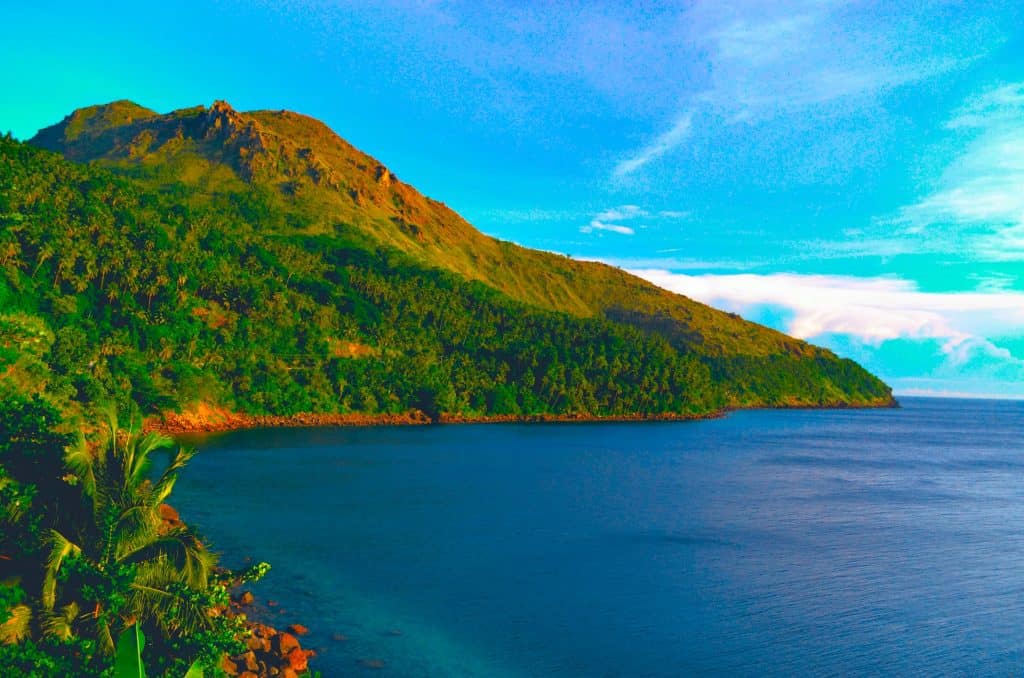
4: Cultural and Historical Highlights of Negros Occidental
Negros Occidental, a province in the Western Visayas region of the Philippines, is not only a land of stunning natural beauty but also a repository of rich cultural and historical heritage. The province's history is etched in its architecture, festivals, and museums, making it a fascinating destination for those interested in the cultural tapestry of the Philippines. This section delves into the historical landmarks, cultural events, and museums that define Negros Occidental's legacy.
Negros Occidental's Festivals: A Celebration of History and Culture
Negros Occidental's cultural vibrancy is most visible in its festivals, which are celebrated with great enthusiasm and participation by the locals. The most prominent among these is the Panaad sa Negros Festival, an annual event held in Bacolod City. This festival, known as the "Festival of Festivals," is a week-long celebration that showcases the history, art, and culture of the various cities and municipalities of Negros Occidental. It's a colorful and lively event where visitors can experience the diverse cultural heritage of the province through music, dance, food, and crafts.
Another significant festival in Negros Occidental is the MassKara Festival of Bacolod City. Celebrated every October, this festival is marked by vibrant parades, intricate masks, and street dancing. The MassKara Festival, with its cheerful atmosphere and elaborate costumes, reflects the resilient spirit of the people of Bacolod and Negros Occidental, earning the city its moniker, "The City of Smiles."
Historical Landmarks of Negros Occidental
Negros Occidental is home to numerous historical landmarks that tell the story of the province's past. The San Sebastian Cathedral in Bacolod City is one such landmark. This late 19th-century church, with its stunning architecture, stands as a symbol of the Catholic faith's deep roots in the province. The cathedral's grand structure and historical significance make it a must-visit site for anyone exploring Negros Occidental.
Silay City, often referred to as the "Paris of Negros," is another historical gem. This city is known for its well-preserved ancestral houses and buildings that reflect the affluence and architectural style of the late 19th and early 20th centuries. The Balay Negrense and the Ramon Hofileña Ancestral House are notable examples, now serving as museums that offer a glimpse into the lifestyle of the sugar barons who once lived there.
The Negros Museum: A Gateway to the Past
The Negros Museum in Bacolod City is more than just a building housing artifacts; it's a gateway to understanding the history and culture of Negros Occidental. The museum showcases the province's past, with exhibits on its pre-colonial history, the sugar industry's rise, and the province's role in Philippine history. The museum also displays contemporary art, highlighting the creative talents of local artists and serving as a bridge between the past and present.
The Ruins: A Symbol of Love and Resilience
Among the historical landmarks in Negros Occidental, perhaps none is as poignant as The Ruins in Talisay City. This mansion, once a symbol of the affluence brought by the sugar industry, was burned down during World War II to prevent its use by Japanese forces. Today, its skeletal structure stands as a testament to love and resilience. The story behind The Ruins, as told by local guides, adds a romantic and tragic dimension to this historical site, making it a must-visit for history enthusiasts.
Preserving Heritage: The Role of Festivals and Museums
Festivals like the Panaad sa Negros and the cultural institutions like the Negros Museum play a crucial role in preserving the heritage of Negros Occidental. These events and establishments not only educate visitors about the province's history but also instill pride in the locals for their rich cultural legacy. They serve as platforms for intergenerational dialogue, ensuring that the stories and traditions of Negros Occidental are passed down and kept alive.
The Cultural Fabric of Negros Occidental
The cultural fabric of Negros Occidental is woven from the threads of its diverse history, traditions, and arts. The province's cultural landscape is a reflection of its colonial past, its role in the sugar industry, and its evolution into a modern Filipino province. From the grandeur of its festivals to the solemnity of its historical sites, the map of Negros Occidental offers a rich tapestry of experiences that highlight the Filipino spirit's resilience and creativity.
Conclusion: A Journey Through Time and Culture
Negros Occidental, with its vibrant festivals, historical landmarks, and museums, offers a journey through time and culture. The province is not just a destination for natural beauty but also a hub for cultural exploration. For travelers looking to immerse themselves in Filipino history and culture, the map of Negros Occidental provides a comprehensive and enriching experience. Whether it's walking through the historic streets of Silay City, participating in the jubilant MassKara Festival, or exploring the artifacts in the Negros Museum, a visit to Negros Occidental is a foray into the heart of Filipino heritage.
5: Recreation and Leisure Activities in Negros Occidental
Negros Occidental, a province in the Philippines, is not just a destination of historical significance and natural beauty; it's also a hub for recreation and leisure. The province offers a plethora of activities that cater to various interests, from serene mountain resorts to thrilling adventure sports. This section explores the various recreational and leisure activities that make Negros Occidental an ideal destination for both relaxation and adventure.
Mountain Resorts: Escaping to the Serenity of Nature
Negros Occidental is home to some of the most picturesque mountain resorts in the Philippines, offering a perfect escape for those seeking tranquility and a close encounter with nature. Mambukal Mountain Resort, located on the slopes of Mount Kanlaon, is a popular destination for both local and international tourists. This resort, known for its hot sulfur springs and lush greenery, provides a relaxing retreat amidst the cool mountain air. Visitors can indulge in therapeutic baths, hike to the seven waterfalls, or simply enjoy the scenic beauty that surrounds the resort.
Another noteworthy mountain resort and retreat is located at the Campuestohan Highland Resort. Situated between the cities of Talisay and Bacolod, this resort offers a unique blend of relaxation and adventure. With its picturesque landscapes, cool climate, and wide array of recreational facilities, including a wave pool, zip line, and rope course, Campuestohan Highland Resort is an ideal destination for families and groups looking for a fun-filled getaway.
Water Activities: Exploring Negros Occidental's Aquatic Offerings
Negros Occidental's coastline and clear waters provide ample opportunities for water activities. The island province boasts several beaches and resorts where visitors can relax and engage in swimming, snorkeling, and other water sports. Danjugan Island, with its empty beach and pristine marine environment, is a haven for snorkelers and divers. The island's beach and surrounding coral reefs are teeming with marine life, offering a glimpse into the underwater world of Negros Occidental.
For those who prefer to relax and swim, relax and swim for a more relaxed water experience, many resorts located in Negros Occidental feature swimming pools set against stunning backdrops. These pools offer a refreshing break from the tropical heat and are perfect for families with children.
The Charm of Negros Occidental's Highland Resorts
Highland resorts in Negros Occidental offer a unique experience, combining the beauty of the mountains with modern amenities. These resorts are not just about scenic views; they provide a range of activities such as horseback riding, hiking, and even spa services for relaxation. The cool mountain air and serene environment make these highland resorts a favorite among those looking to unwind and rejuvenate.
Negros Occidental's Rich Marine Life: A Snorkeler's Paradise
Negros Occidental's marine biodiversity is one of its most significant tourist attractions. The province's coastal areas are home to a variety of marine species, making it an ideal spot for snorkeling. The clear waters and coral reefs provide an up-close view of the country' vibrant marine ecosystem. Danjugan Island, in particular, is renowned for its rich marine life and conservation efforts, making it a must-visit destination for nature enthusiasts and snorkelers.
Adventure and Thrill: Exciting Activities for the Bold
For adventure seekers, Negros Occidental does not disappoint. The province offers a range of thrilling activities, from zip-lining at Campuestohan Highland Resort to mountain trekking in its rugged terrains. These activities not only provide an adrenaline rush but also offer a different perspective of the province's natural beauty.
Negros Occidental's Wildlife Conservation Efforts
Negros Occidental's commitment to wildlife conservation is evident in its various nature reserves and sanctuaries. The Negros Forests and Ecological Foundation Inc. (NFEFI) is dedicated to preserving the province's wildlife, especially its endangered species. Visitors to these sanctuaries can learn about the province's conservation efforts and witness the diverse wildlife that Negros Occidental is striving to protect.
Conclusion: A Diverse Array of Recreational Opportunities
Negros Occidental province is a destination that offers a diverse array of recreational and leisure activities. From relaxing in mountain resorts to exploring its underwater treasures, from experiencing thrilling adventures to participating in wildlife conservation, the province caters to a wide range of interests. These activities not only provide enjoyment and relaxation but also offer an opportunity to connect with nature and appreciate the beauty of the Negros Occidental province. Whether you're a nature lover, an adventure enthusiast, or just looking for a peaceful retreat, the Negros Occidental province has something special to offer.
6: Tourism and Travel Information in Negros Occidental
Negros Occidental, a province in the Philippines' Western Visayas region, is a destination that beckons travelers with its blend of natural beauty, cultural richness, and historical depth. For those planning to explore this captivating province, having comprehensive travel information is crucial to experiencing all that Negros Occidental has to offer. This section provides essential travel tips, guidance from the local tourism office, and insights into the best times to visit, making your journey to Negros Occidental both enjoyable and memorable.
Getting to and Around Negros Occidental map of the Negros Occidental map Negros Occidental
Traveling to Negros Occidental is relatively straightforward, with various options available to suit different preferences and budgets. For international and domestic travelers, the Bacolod-Silay Airport serves as the main gateway to the province. Located just a short drive from Bacolod City, the airport is well-connected with major cities in the Philippines and some international destinations. Once in Negros Occidental, getting around is convenient with the availability of public transportation, including buses, jeepneys, and tricycles. For those preferring more comfort or traveling in groups, renting a car or hiring a taxi is a viable option.
Travel Time Considerations: When to Visit Negros Occidental
Deciding the best time to visit Negros Occidental largely depends on the activities you plan to engage in and the festivals you wish to experience. The province enjoys a tropical climate, with the dry season from December to May being the ideal travel time, for beach visits and outdoor activities. The wet season, from June to November, can be challenging for travel due to heavy rains, but it also offers lush, scenic landscapes and fewer tourists.
The MassKara Festival in October and the Panaad sa Negros Festival in April are peak tourist seasons, bringing vibrant colors and lively celebrations to Bacolod City. These festivals are perfect for experiencing the rich culture and festive spirit of Negros Occidental but expect larger crowds and higher accommodation prices during these times.
The Role of the Tourism Office in Negros Occidental
The tourism office in Negros Occidental plays a vital role in assisting travelers. Located in Bacolod City, the tourism office provides valuable information, including brochures, maps, and advice on attractions, accommodations, and local customs. They can also guide you on travel itineraries tailored to your interests, whether it's exploring historical landmarks, relaxing in resorts, or embarking on nature adventures. Utilizing the resources and expertise of the tourism office can greatly enhance your travel experience in Negros Occidental.
Accommodation Options: From Luxury Resorts to Budget Stays
Negros Occidental offers a wide range of accommodation options to cater to different preferences and budgets. In Bacolod City, you'll find luxury hotels, mid-range accommodations, and budget-friendly guesthouses. For those seeking a more immersive experience, resorts in areas like Mambukal and Campuestohan offer a retreat amidst nature, while beachfront hotels in coastal towns provide direct access to the sea. It's advisable to book accommodations in advance, especially during festival seasons and holidays, to secure the best options.
Experiencing Local Cuisine: A Gastronomic Journey
A trip to Negros Occidental is incomplete without indulging in its local cuisine. The province is known for its culinary delights, with Bacolod City being the epicenter of its gastronomic offerings. Don't miss trying the famous Chicken Inasal, a grilled chicken dish marinated in a mixture of calamansi, pepper, vinegar, and annatto. Sweet treats like Piaya and Napoleones are also must-tries. Local restaurants and eateries in Bacolod and other towns offer a taste of the diverse and rich flavors of Negros Occidental's cuisine.
Health and Safety Tips for Travelers
Travelers to Negros Occidental should be mindful of health and safety measures to ensure a hassle-free experience. It's advisable to have travel insurance and be up-to-date with vaccinations. While the province is generally safe for tourists, exercising common sense and being aware of your surroundings is always recommended. Keep important documents secure and be cautious when using ATMs or carrying large amounts of cash.
Language and Communication: Bridging the Gap
The primary language spoken in Negros Occidental is Hiligaynon (Ilonggo), with Filipino and English widely understood and spoken, especially in urban areas and tourist spots. English is used in business, education, and for official purposes, making communication relatively easy for English-speaking tourists. Learning a few basic phrases in Hiligaynon can be a delightful way to connect with locals and show respect for their culture.
Conclusion: Preparing for an Unforgettable Journey
A visit to Negros Occidental promises a journey filled with diverse experiences, from historical exploration and cultural immersion to natural adventures and culinary delights. Preparing for your trip by understanding the best travel times, utilizing the resources of the tourism office, choosing suitable accommodations, and being mindful of health, safety, and communication will enhance your experience. Negros Occidental, with its warm people, rich history, and breathtaking landscapes, awaits to offer you a memorable and enriching travel adventure.
7: Economic and Administrative Overview of Negros Occidental
Negros Occidental, as a province in the Western Visayas region of the Philippines, holds significant importance both economically and administratively. This section delves into the economic landscape, the role of the provincial government, and the administrative divisions that shape the functioning of this dynamic region. Understanding these aspects is crucial for those looking to explore Negros Occidental beyond its many tourist spots and attractions, offering insights into its governance, economy, and societal structure.
Economic Landscape of Negros Occidental
Economically, Negros Occidental has traditionally been known as the "Sugarbowl of the Philippines," with its vast sugarcane plantations driving the local economy for decades. The province has been at the forefront of the country’s sugar industry, contributing significantly to both local and national economies. However, in recent years, there has been a concerted effort to diversify the economy. This includes promoting other agricultural products, such as rice and corn, and venturing into sectors like aquaculture, particularly in cities like Sagay and Cadiz.
Tourism has also emerged as a vital component of Negros Occidental's economy. The province's natural beauty, historical sites, and cultural festivals attract a significant number of tourists each year, contributing to economic growth and employment. Ecotourism initiatives, particularly in areas like Danjugan Island and Mambukal Mountain Resort, are examples of sustainable tourism development that benefit both the environment and local communities.
The Role of the Provincial Government
The provincial government of Negros Occidental plays a pivotal role in the region's development and governance. Headquartered in Bacolod City, the government is responsible for implementing policies and programs that impact various aspects of life in the province. This includes overseeing economic development, managing natural resources, ensuring public health and safety, and promoting education and cultural preservation.
One of the key responsibilities of the provincial government is to ensure sustainable development. This includes balancing economic growth with environmental conservation and social equity. Initiatives such as promoting organic agriculture and renewable energy usage are part of the government's efforts to foster a more sustainable and inclusive economic model.
Administrative Divisions: The Backbone of Local Governance
Negros Occidental is divided into several cities and municipalities, each with its own local government. These administrative divisions play a crucial role in the day-to-day governance of the province, allowing for more localized and efficient administration. The cities, including Bacolod, Talisay, Silay, Sagay, Cadiz, Kabankalan, and Bago, are important centers of economic and cultural activity. The municipalities, each with its unique characteristics and offerings, contribute to the diversity and richness of Negros Occidental.
The local governments in these administrative divisions are responsible for a range of services, from public infrastructure and health care to education and community development. They also play a critical role in implementing provincial and national policies at the local level, ensuring that the benefits of development reach all corners of Negros Occidental.
Infrastructure Development and Public Services
Infrastructure development is a key focus area for Negros Occidental's provincial government, with ongoing projects aimed at improving transportation, utilities, and public facilities. The development of roads, bridges, and ports is vital for facilitating trade and travel within the province and beyond. Additionally, investments in public services, including health care, education, and social welfare, are essential for enhancing the quality of life of the residents.
Challenges and Opportunities
Like any region, Negros Occidental faces its share of challenges. These include managing the impacts of climate change, addressing socio-economic disparities, and transitioning from a sugar-centric economy to a more diversified one. However, these challenges also present opportunities for innovation, sustainable development, and inclusive growth.
The province's rich cultural heritage, natural resources, and strategic location position it well for continued development and prosperity. By leveraging these assets and addressing its challenges, Negros Occidental has the potential to not only advance its own progress but also contribute significantly to the broader development of the Philippines.
Conclusion: A Dynamic and Forward-Looking Province
Negros Occidental, with its vibrant economy, effective governance, and diverse administrative divisions, presents a model of dynamic and forward-looking regional development. The province's efforts to diversify its economy, prioritize sustainable development, and invest in public services are indicative of a region that is not only aware of its challenges but also actively working towards a prosperous and equitable future. For visitors and residents alike, understanding the economic and administrative framework of Negros Occidental offers a deeper appreciation of the province's complexities and the efforts being made to ensure its continued growth and development.
8: Special Features of Negros Occidental
Negros Occidental, a province in the Philippines, is not just known for its scenic landscapes and cultural richness but also for its unique and special features that set it apart. This section explores the distinctive landmarks, structures, and elements that contribute to the province's character and appeal. From architectural marvels to significant public buildings, these features play a pivotal role in defining the identity of Negros Occidental.
The Architectural Grandeur of Negros Occidental's Provincial Capitol
One of the most prominent landmarks in Negros Occidental is its Provincial Capitol in Bacolod City. This building, a fine example of neoclassical architecture, stands as a symbol of the province's governance and history. The former capitol building, with its impressive façade and lush surroundings, is more than just an administrative center; it's a testament to the artistic and architectural heritage of Negros Occidental. The building's design reflects the province's colonial past and its journey towards modernity.
Panaad Stadium and Park: Centers of Recreation and Culture
The Panaad Stadium, located within the Panaad Park and Sports Complex in Bacolod City, is another significant feature of Negros Occidental. This stadium is not just a venue for sports events; it's a gathering place for various cultural and community activities, including the celebrated Panaad sa Negros Festival. The park surrounding the stadium is a green oasis, offering residents and visitors a space for leisure, exercise, and relaxation.
The Taj Mahal of Negros Occidental: The Ruins in Talisay City
One cannot discuss the special features of Negros Occidental without mentioning The Ruins in Talisay City. Often referred to as the "Taj Mahal of Negros," this historic mansion is a symbol of love and loss. The skeletal remains of what was once a grand mansion now stand amidst well-manicured gardens, attracting tourists not just for its tragic history but also for its haunting beauty. The Ruins is a favorite subject for photographers and a must-visit for anyone traveling to Negros Occidental.
Historical Churches: Beacons of Faith and History
"Negros Occidental province is home to several historical churches, each with its unique story and architectural style. The San Sebastian Cathedral in Bacolod City is a notable example, with its centuries-old structure and religious significance. These churches are not just places of worship; they are repositories of the province's religious and cultural history, reflecting the blend of indigenous and colonial influences that have shaped Negros Occidental.
Public Buildings and Infrastructure
The public buildings and infrastructure in Negros Occidental also contribute to its character. From old government buildings with their Spanish colonial architecture to modern facilities, these structures reflect the province's development over the years. The ongoing efforts to preserve historical buildings while integrating new, modern infrastructure demonstrate Negros Occidental's commitment to progress without losing sight of its heritage.
Cultural Institutions: Preserving and Promoting Heritage
Cultural institutions in Negros Occidental, such as the Negros Museum and various art galleries, play a crucial role in preserving and promoting the province's heritage. These institutions are not just about showcasing artifacts and artworks; they are active centers of learning and cultural exchange. They provide a platform for local artists to display their talents and for the public to engage with the province's rich artistic traditions.
Natural Wonders: The Green and Blue Canvas of Negros Occidental
Apart from man-made structures, Negros Occidental's natural wonders are its top attraction and most special features attraction. The Mambukal Mountain Resort and Campuestohan Highland Resort offer stunning views of the province's mountainous terrain, while the pristine beaches and marine sanctuaries like Danjugan Island showcase its coastal beauty. These natural attractions are integral to Negros Occidental's identity, drawing visitors from around the world.
Conclusion: A Mosaic of Special Features
Negros Occidental is a province that prides itself on a mosaic of special features, each contributing to its unique charm and appeal. From architectural landmarks and historical sites to natural wonders and cultural institutions, these features collectively create the tapestry that is Negros Occidental. They not only add to the province's aesthetic and cultural value but also tell the story of its past, present, and future. For travelers and locals alike, these special features of Negros Occidental offer endless opportunities for exploration, discovery, and appreciation of the province's rich and diverse heritage.
9: Negros Occidental in the Larger Context
Negros Occidental, a province steeped in history and cultural vibrancy, is not an isolated entity but a significant part of the larger Philippine archipelago. This section aims to position the map of the Negros Occidental map within a broader context, considering its relationship with neighboring regions, its contributions to the nation, and its place in the Philippine narrative. Understanding the Negros Occidental map in this wider perspective allows for a deeper appreciation of its role and significance in the country's socio-economic, cultural, and historical landscape.
Negros Occidental and Negros Oriental: Twin Provinces with Distinct Identities
Negros Occidental, along with Negros Oriental, forms the island of Negros, one of the largest islands in the Philippines. While they share geographical proximity, each province has developed its distinct identity. Negros Occidental, belonging to the Western Visayas region, is predominantly Hiligaynon-speaking and has a history deeply rooted in the sugar industry. In contrast, Negros Oriental, part of the Central Visayas region, has a more diverse economic base and speaks Cebuano.
The relationship between these two provinces, often collectively referred to as the Negros Island Region, is characterized by shared histories and cultures, yet distinct developmental paths. This unique dynamic not only influences their internal policies but also impacts their interactions with each other and the wider negros island region.
Negros Occidental's Place in the Western Visayas and Beyond
Negros Occidental is a key province in the Western Visayas, contributing significantly to the region's economic and cultural dynamism. Its capital city, Bacolod City, serves as a major hub in the Visayas for commerce, education, and government services. The province's economic contributions, especially through its sugar industry and emerging sectors like tourism and IT-BPO, have ramifications beyond its borders, influencing the economic landscape of the Western Visayas and the Philippines as a whole.
Culturally, Negros Occidental adds to the rich tapestry of the Western Visayas, known for its festivals, arts, and culinary traditions. The province's cultural exports, like the MassKara Festival and Chicken Inasal, have gained national recognition, further cementing Negros Occidental's role in shaping the Filipino cultural identity.
Comparisons with Other Regions and Its Implications
Comparing the map of Negros Occidental with other Philippine regions reveals its unique position. Unlike Metro Manila's urban sprawl or the agricultural landscapes of Mindanao, the map of Negros Occidental presents a blend of urban development, agricultural wealth, and natural beauty. This unique combination allows the province to offer a diverse range of experiences, from bustling city life in Bacolod to serene retreats in its highlands and beaches.
Negros Occidental's approach to development, balancing economic growth with cultural preservation and environmental sustainability, serves as a model for other regions. The province's initiatives in organic farming, renewable energy, and eco-tourism are particularly noteworthy, highlighting its commitment to sustainable and inclusive development.
Negros Occidental's Role in Philippine History
Historically, Negros Occidental has played a significant role in the Philippines' narrative. The province was a hotbed of revolutionary activities during the Philippine Revolution against Spanish rule and the subsequent Philippine-American War. Cities like Silay and Talisay were pivotal in these historical events, shaping not just the province's history but also contributing to the national struggle for independence.
More than half, recently, Negros Occidental has been at the forefront of agrarian reform movements and social justice initiatives, reflecting its ongoing commitment to addressing historical inequities, particularly in the sugar industry.
Negros Occidental's Future Prospects within the Philippines
Looking forward, Negros Occidental is poised to play an increasingly important role in the Philippines. With its strategic location, abundant natural resources, and human capital, the province is well-positioned for further economic growth and development. As the Philippines continues to evolve in the global landscape, regions like Negros Occidental will be crucial in driving progress, innovation, and sustainable development.
Conclusion: A Microcosm of the Filipino Experience
Negros Occidental, in many ways, serves as a microcosm of the Filipino experience. It encapsulates the nation's struggles and triumphs, its cultural diversity, and its aspirations for a better future. Understanding the map of Negros Occidental within this larger context underscores the province's significance not just as a regional powerhouse but also as an integral part of the Philippine narrative.
For travelers, residents, and observers alike, Negros Occidental offers a window into the heart and soul of the Philippines. Its history, culture, and development trajectory provide valuable insights into the complexities and nuances of Filipino life. As Negros Occidental continues to evolve, it remains a vital and dynamic part of the nation, contributing to the rich and diverse tapestry that is the Philippines.
10: Conclusion – The Enduring Allure of Negros Occidental
Negros Occidental, a province in the Philippines, presents a tapestry of experiences that resonate deeply with both its residents and visitors. From its lush landscapes to its rich cultural heritage, from its economic vitality to its historical significance, Negros Occidental stands as a testament to the Filipino spirit. This concluding section aims to encapsulate the essence of Negros Occidental, highlighting its enduring allure and the indelible mark it leaves on all who explore its depths.
A Province Steeped in History and Culture
Negros Occidental's history is a vivid narrative of triumphs and tribulations. It has played a pivotal role in the Philippines' struggle for independence and has been at the forefront of significant societal transformations. Cities like Silay and Talisay are not just geographical locations; they are historical landmarks where the echoes of the past continue to resonate. The province's history is intricately woven into its present, shaping its identity and character.
Culturally, Negros Occidental is a melting pot of influences, each adding a unique flavor to its societal fabric. The province celebrates this diversity through various festivals, with the MassKara Festival and Panaad sa Negros being prime examples. These festivals, alongside the province's art, cuisine, and traditions, are vibrant expressions of its rich cultural heritage.
The Natural Splendor of Negros Occidental
The natural beauty of Negros Occidental is undeniable. From the serene beaches of Sipalay to the mystical peaks of Mount Kanlaon, the province offers a plethora of landscapes that captivate and inspire. The Mambukal Mountain Resort and Campuestohan Highland Resort are just a glimpse into the province's natural offerings. These places not only provide a haven for relaxation and recreation but also serve as crucial habitats for a diverse array of flora and fauna.
Negros Occidental's commitment to preserving its natural environment is evident in its eco-tourism initiatives. Places like Danjugan Island showcase the province's dedication to conservation and sustainable tourism, offering experiences that are both enjoyable and enlightening.
The Economic Pulse of Negros Occidental
Negros Occidental's economy, historically centered around the sugar industry, has evolved to encompass a wider range of sectors. The province's economic landscape is a dynamic mix of agriculture, tourism, and emerging industries. This diversification has not only bolstered the province's economic resilience but also opened up new opportunities for development and progress.
The provincial government's role in fostering this economic growth while ensuring sustainability is commendable. Initiatives in organic farming, renewable energy, and infrastructure development reflect a forward-thinking approach to regional development.
Negros Occidental in the Broader Philippine Context
Negros Occidental is more than just a province; it is a vital component of the Philippine archipelago. Its contributions to the nation's history, culture, and economy are significant. The province's relationship with its neighbor, Negros Oriental, and its role within the Western Visayas region, emphasize its importance in the national narrative.
The province's ongoing efforts to address social challenges, promote sustainable development, and preserve its cultural and natural heritage are indicative of its broader role in shaping the future of the Philippines.
The People: The Heart of Negros Occidental
At the heart of the Negros Occidental province's charm are its people. Known for their warmth and hospitality, the residents of Negros Occidental embody the province's spirit. Their resilience in the face of challenges, their joyous celebration of life, and their commitment to their community and traditions are what truly make Negros Occidental special.
A Destination for All Seasons - Travel Guide
Negros Occidental is a destination that appeals to a diverse array of interests and preferences. Whether it's exploring historical sites, immersing in cultural festivities, enjoying the natural landscapes, or engaging in economic ventures, the province offers something for everyone. It's a place where history, culture, nature, and progress coalesce to create a unique and memorable experience.
Conclusion: The Lasting Appeal of Negros Occidental Tourist Spots
In conclusion, Negros Occidental is a province that captivates and enchants. Its blend of historical depth, cultural richness, natural beauty, and economic vitality makes it a microcosm of the Filipino experience. The province's ability to preserve its heritage while embracing change is a testament to its resilience and dynamism.
For those who visit, Negros Occidental offers a journey through time, a celebration of culture, an embrace of nature, and a glimpse into the future. It's a place where every visit enriches, every experience enlightens, and every moment lingers in the memory. Negros Occidental, with its enduring allure, remains a cherished jewel in the Philippine archipelago, inviting all to discover and delight in its many wonders. Panaad Festival | Maria Braga | Kanlurang Negros | Don Salvador Benedicto
Sources: https://en.wikipedia.org/wiki/Negros
